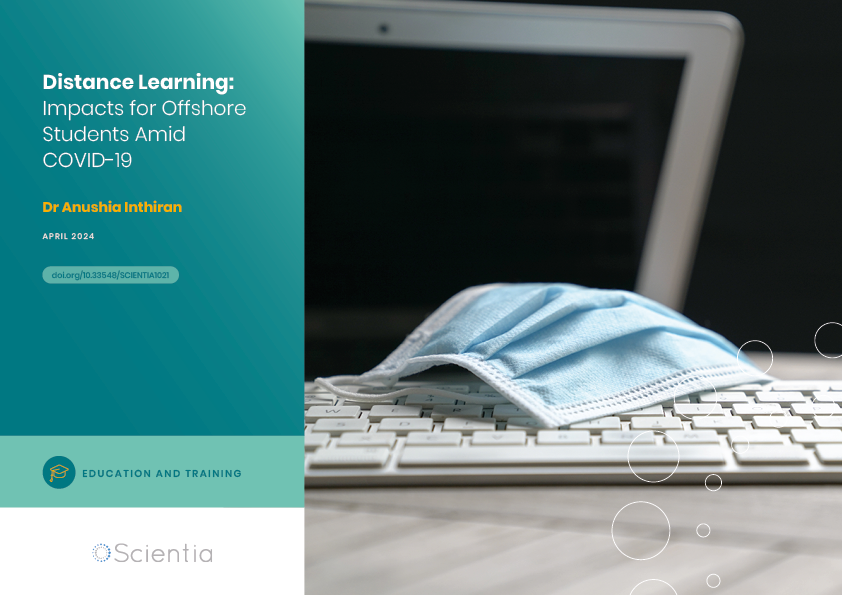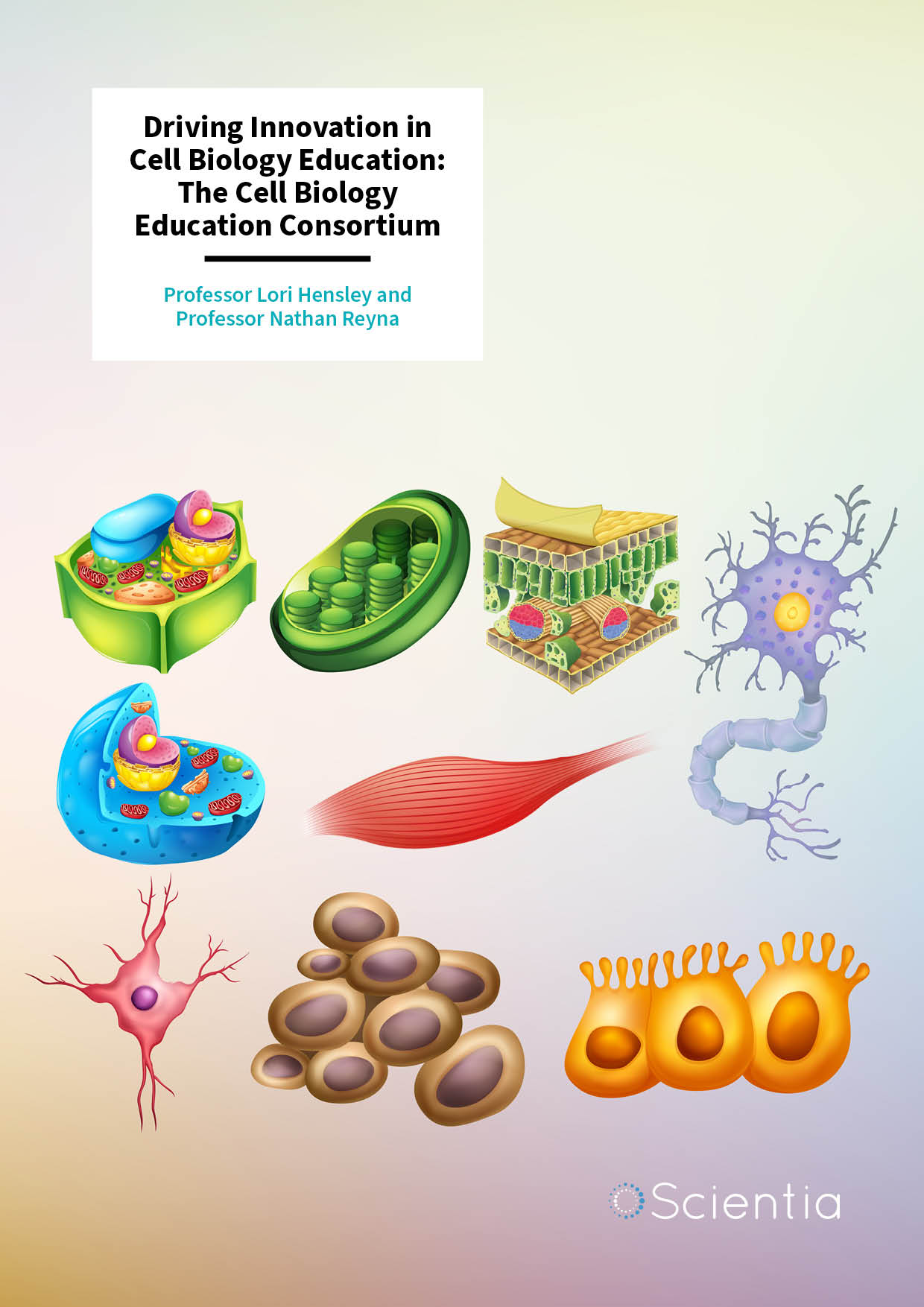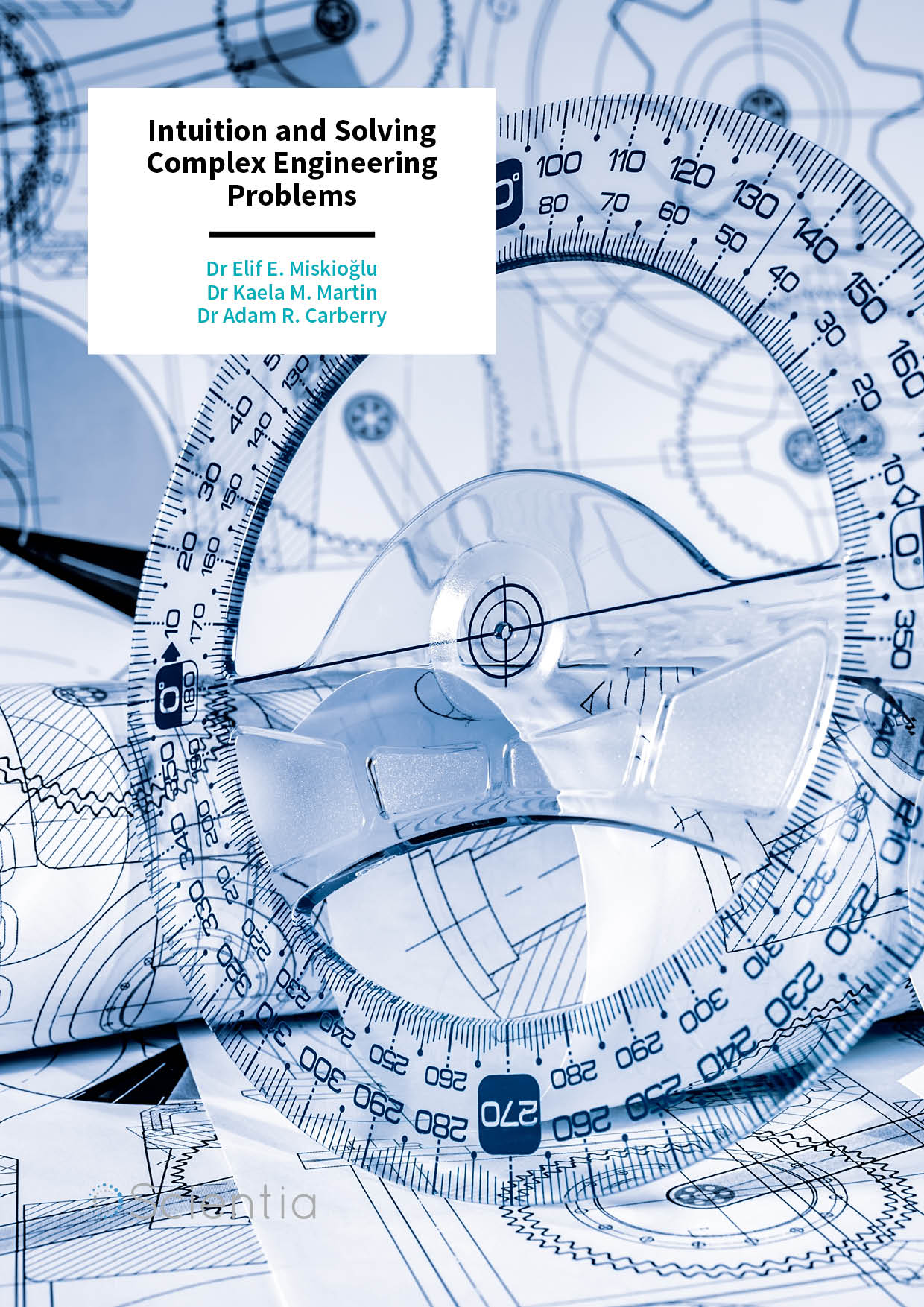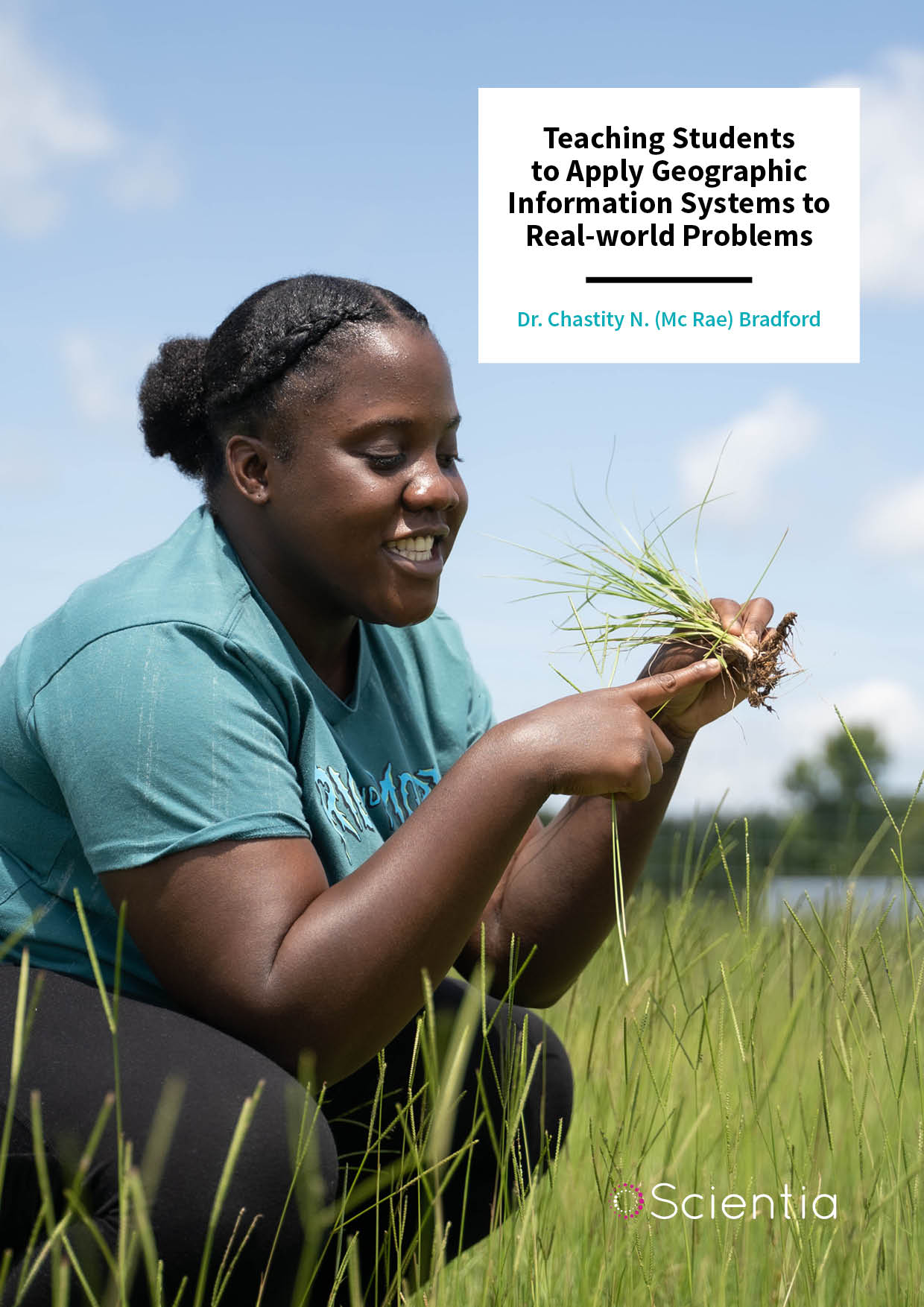Enhancing Teacher Learning of Ambitious Instruction Through Collaborative Design
Efforts to reform science education in the US emphasise the importance of engaging in the development of explanations of natural phenomena in students’ learning. Discussing and evaluating ideas is a vital component of this process. Thus, teaching practices that enhance student sensemaking through talk are central to improved science education; this is a marked shift from traditional teaching, where the teacher lectures about science explanations and then students do a lab to confirm what they have been told. Researchers from Florida State University and Georgia State University are investigating how teachers can be supported to develop the skills they need to adopt these instructional practices, in their research and professional development project: Learning through Collaborative Design.
Learning Science by Talking Science
In science, scientific enquiry is propelled by the need to answer questions – and this process follows a pattern where scientists use evidence gathered from the natural world to construct explanations for observed phenomena. Similarly, students must be given opportunities to ‘figure things out’ in science if they are to develop a rich understanding of scientific concepts. In the classroom, this can be achieved through negotiations between peers, joint attention, and shared engagement aimed at constructing and critiquing ideas about an interesting or vexing topic.
Imagine a classroom where students in small groups are engaging in a lesson on natural and sexual selection and the interplay between how these mechanisms shape population traits. As you enter the room you observe students’ wonderment, frustration, joy, and even nervousness, as they explore a dataset to develop an evidence-based claim about what is happening and, most importantly, why it is happening. These emotions arise because students are actively discussing and grappling with one another’s ideas about what causes colour variation in Venezuelan Guppies (a type of fish). Such sensemaking discussions demonstrate how framing lessons as a space for students to ‘figure things out’ can lead to deeper engagement with scientific concepts.
This process is emphasised in the National Research Council’s Framework for K-12 Science Education, developed in 2012 to reform science education in the US from kindergarten to 12th grade. Based on this framework, the Next Generation Science Standards (NGSS) provide performance expectations that integrate three dimensions of science learning.
The first of these dimensions involves ‘disciplinary core ideas’ – the key ideas in each of the disciplinary areas of science. The second encompasses ‘crosscutting concepts’ – which help students explore connections across the multiple disciplines within the physical sciences, life sciences, Earth and space sciences, and engineering. The final dimension is ‘scientific practices’, which allow students to engage with the processes scientists use to investigate the natural world. Exploring these dimensions through sensemaking discourse can help students build a robust and cohesive understanding of science over time. By shifting the focus of science education from reaching the ‘one correct answer’ towards the process used to generate and evaluate ideas, students also develop transferable skills, such as critical thinking.
But teachers often have minimal experience supporting students to engage in ‘productive talk’ – that is discussions centred on scientific knowledge generation and evaluation. Further, many find it difficult to design instruction focused on productive talk. If the goals of the NGSS are to be achieved, teachers must be provided with the skills and tools they need to achieve this ambitious science instruction. For many teachers, this necessitates a fundamental shift in their thinking and practice.
How to enhance teachers’ development in ambitious science instruction is a topic being tackled by a team of science education researchers and professional development experts from Florida State University and Georgia State University. Their National Science Foundation funded project, ‘Learning through Collaborative Design – Professional Development’ (LCD-PD), aims to investigate how a specific kind of professional development activity – collaborative design – can support teachers’ professional growth and provide them with the skills and tools required to facilitate productive talk in their science classrooms.
‘If students are to understand science as a sensemaking activity in which core ideas, scientific practices, and crosscutting concepts are used in concert, the field must go beyond simply providing new curricula for teachers,’ explains Project Manager Dr Jennifer Schellinger. ‘Instead, new approaches to professional development – approaches that promote teachers’ learning about and enactment of productive talk – are needed.’

Collaborative Design as an Active Learning Tool
Well-designed professional development that supports teacher learning is especially important when the instructional practices they need to adopt are challenging and complex, as is the case with the NGSS. To optimise their progress, the LCD-PD team build on established principles of engaging teachers in active learning. In particular, evidence highlights the importance of involving teachers in the development of curricular materials. ‘Collaborative design is situated in real-world teaching contexts and positions teachers as active content and pedagogical learners within the context of their classrooms,’ says Team Leader Dr Sherry Southerland.
Previous research has predominantly focused on the modifications that teachers make to the curricula. Relatively little research has investigated how these curriculum design activities, when occurring in collaboration with others, contribute to changes in the knowledge, beliefs, and practices of the participating teachers themselves. The team aims to address this knowledge gap through the research component of the LCD-PD project. ‘We aim to understand if and how teachers’ engagement in collaborative design of science lessons shapes their learning and enactment of those lessons,’ explains Dr Southerland.
The lessons designed by teachers participating in LCD-PD are structured around strategies that position students to actively engage with challenging questions about the natural world. Additionally, teachers are introduced to the importance of embedding this strategy in their instructional practices. Dr Southerland says, ‘The lesson design and instructional practices revolve around the idea of using vexing questions about natural phenomena to get students to deeply engage in “figuring things out” through productive talk in the classroom, and in that process, they learn the role evidence plays in knowledge construction in science.’
The Project
During the first phase of the LCD-PD project, the team designed, implemented, and refined the professional development in two school districts across the academic years of 2018/19 and 2019/20.
Teachers initially took part in a six-day professional development course during the summer, where they collaborated with a community of teachers and LCD-PD facilitators to explore the role of productive talk in science learning, to examine strategies that support this kind of discourse in science classrooms, and to design science lessons centred around these strategies. Subsequently, teachers participated in multiple cycles of designing, implementing, and evaluating lessons across the school year. The structure of each cycle aimed to provide teachers with sufficient time to practice their new skills and tools, examine their teaching practices closely, and reflect on their development.
The core focus of the design sessions is to help teachers ensure that lessons move beyond superficial skills and activities, and instead, effectively engage students with productive talk and scientific sensemaking. In post-teaching analysis sessions, teachers were given the opportunity to contrast different strategies to support student discourse and reflect on factors contributing to productive talk in classrooms.
Findings from the first phase of the project identified effective design principles for professional development that help teachers refine their practice. These principles included attending to the kinds of activities that make up the professional development, streamlining these activities, modelling best practices, and providing balance between the doing and reflecting on practice. Indeed, when teachers were positioned as ‘content learners’ before they reflected on activities as ‘teacher learners’, their level of engagement increased.
Further, the LCD-PD team examined participating teachers’ classroom instruction around lessons they had collaboratively designed during the professional development. They identified key components that maintain high-level student thinking and sensemaking throughout the trajectory of a science lesson. These components require that the lesson begin with a rigorous task and that the teacher continually presses students to provide contributions across the arc of the lesson.
Critically, a rigorous task alone is not enough – the alignment of a teacher’s practice and pedagogical views with reform instruction has a considerable influence on classroom learning opportunities. For instance, even when curricular materials have the potential to engage students with concepts, ideas, and practices to encourage productive discussions, small instructional moves rooted in a teacher’s views on teaching have the power to position students’ understanding of science away from a sensemaking endeavour and towards the accumulation of previously-developed knowledge. These findings demonstrate how shifts in teacher practice as well as their thinking are central to effective educational reforms.
The teachers participating in the first phase of LCD-PD continue to be supported into the second and third years of the project. ‘This follow-up will provide the teachers with extended support and will contribute empirical insights regarding the value of long-term professional development support on teachers’ adoption of and developing expertise around fostering productive talk in science classrooms,’ says Dr Schellinger.

Next Stages: The Field Study
The next phase of LCD-PD, a field study, will compare the LCD-PD model developed during the first phase of the project with two other treatments. One of these treatments is a Learning through Participation in Classroom Activity professional development (LPCA-PD) model and the second is a Results-Based professional development model, which will function as the control group. All models support teachers’ learning of the skills and knowledge necessary to implement the NGSS.
The LCD-PD group emphasises collaborative design and revision of curricular materials, while the LPCA-PD group engages in cycles of teaching and analysing without modification to the materials or engaging in collaborative lesson design with peers. Otherwise, the structure and content of the professional development provided to the groups will be kept consistent. Because both professional developments focus on promoting effective productive talk, the inclusion of a control group will allow the researchers to better understand the influence of collaborative design on teachers’ learning and practices. The Results-Based control group will not receive any professional development associated with the project until the field study is complete, and instead their normal teaching around the lesson topics covered by the LCD-PD and LPCA-PD groups will be evaluated.
Although the final phase of the LCD-PD project has been delayed due to COVID-19, the researchers have already contributed valuable information to the science education community through presentations, papers, and academic posters. Ultimately, the professional development strategies devised as part of their LCD-PD project could help teachers across the US gain the skills and knowledge they need to keep up with science education reforms and provide high-quality instruction to their students.
SHARE
DOWNLOAD E-BOOK
WATCH THE ANIMATION
REFERENCE
https://doi.org/10.33548/SCIENTIA612
MEET THE RESEARCHERS

Dr Jennifer Schellinger
School of Teacher Education
Florida State University
Tallahassee, FL
USA
Dr Jennifer Schellinger earned her PhD in Science Education from Florida State University, where she is currently continuing her research as well as managing the Learning Through Collaborative Design – Professional Development project. Dr Schellinger has also taught on a range of science and education modules and has had numerous articles published in peer-reviewed journals.
W: https://lcdpd.education.fsu.edu/
E: jls09@fsu.edu

Dr Sherry A. Southerland
School of Teacher Education
Florida State University
Tallahassee, FL
USA
Dr Sherry A. Southerland is an AAAS fellow and is the Anne and John Daves Professor of Science Education at Florida State University, where she also serves as Director of the School of Teacher Education, the Director of the Center for Research in Mathematics, Engineering and Science, and the Co-Director of the FSU-Teach Teacher Preparation Program. Dr Southerland is the editor of ‘Science Education’. Her research focuses on the interplay of context, culture, and effect on learning, for students and the teachers that serve them.
E: ssoutherland@admin.fsu.edu

Todd Hinton Bevis
Office of STEM Teaching Activities
Florida State University
Tallahassee, FL
USA
Todd H. Bevis is the Director of Professional Development Programs in the Office of STEM Teaching Activities at Florida State University. His instruction covers a range of science teaching subjects, and he has been invited to present his work and provide workshops at numerous state-wide and national meetings and conferences. He has been on the leadership team of many STEM education research projects.
E: bevis@bio.fsu.edu

Dr Patrick J. Enderle
Department of Middle and Secondary Education
Georgia State University
Atlanta, GA
USA
Dr Patrick J. Enderle earned his PhD in Science Education from Florida State University, before continuing his research within the Center for Education Research in Mathematics, Engineering, and Science. Dr. Enderle’s research focuses on supporting teachers’ learning about and implementation of instruction grounded in engaging in scientific practices. He currently holds the position of Assistant Professor of Science Education at Georgia State University.
E: penderle@gsu.edu

Dr Ellen M. Granger
Office of STEM Teaching Activities
Florida State University
Tallahassee, FL
USA
Dr Ellen M. Granger is an AAAS Fellow and has been a scientist and science educator since earning her PhD in Neuroscience and has spent nearly two decades working in teacher professional learning. She currently serves as the Director of the Office of STEM Teaching Activities in the College of Arts & Sciences at Florida State University, and the Co-Director of the Florida State University-Teach Teacher Preparation Program. She has authored or co-authored many papers in science and science education and been on the leadership team of many STEM education research projects.
E: granger@bio.fsu.edu

Dr Miray Tekkumru-Kisa
School of Teacher Education & Learning Systems Institute
Florida State University
Tallahassee, FL
USA
Dr Miray Tekkumru-Kisa currently holds the position of Assistant Professor in Science Education within the School of Teacher Education with a joint appointment in the Learning Systems Institute at Florida State University (FSU). Prior to joining the FSU faculty, she worked as a researcher in the Learning Research and Development Center at the University of Pittsburgh where she earned her PhD in Learning Sciences and Policy. Two interrelated foci of Dr Tekkumru-Kisa’s research are understanding and supporting teachers’ learning and measuring and improving instructional quality for ambitious and equitable science teaching.
PROJECT FUNDING
US National Science Foundation Grant No. 1720587.

REPUBLISH OUR ARTICLES
We encourage all formats of sharing and republishing of our articles. Whether you want to host on your website, publication or blog, we welcome this. Find out more
Creative Commons Licence (CC BY 4.0)
This work is licensed under a Creative Commons Attribution 4.0 International License. 
What does this mean?
Share: You can copy and redistribute the material in any medium or format
Adapt: You can change, and build upon the material for any purpose, even commercially.
Credit: You must give appropriate credit, provide a link to the license, and indicate if changes were made.
SUBSCRIBE NOW
Follow Us
MORE ARTICLES YOU MAY LIKE
Dr Anushia Inthiran | Distance Learning: Impacts for Offshore Students Amid COVID-19
The COVID-19 pandemic significantly disrupted global education and necessitated a shift to online learning. Due to ongoing border closures, even after the pandemic eased, offshore students were prevented from attending their university in person long after their local peers, impacting their learning ability and future perspectives. Dr Anushia Inthiran from the University of Canterbury conducted a survey among a group of offshore students to understand the consequences of distance learning on their education.
Professor Lori Hensley – Professor Nathan Reyna | Driving Innovation in Cell Biology Education: The Cell Biology Education Consortium
Cell biology is the foundation of several branches of science and medicine. An education in cell biology theory and techniques gives students the grounding to pursue careers in healthcare, research, and the pharmaceutical industry, as well as providing a background in ethics, science communication and critical thinking. Unfortunately, undergraduate-level education in cell biology is often prescriptive and limited. The Cell Biology Education Consortium, founded by Professors Lori Hensley and Nathan Reyna from Jacksonville State and Ouachita Baptist Universities, respectively, offers a novel approach in which students engage in authentic research and provides extensive resources to support learning.
Dr Elif E. Miskioğlu – Dr Kaela M. Martin – Dr Adam R. Carberry | Intuition and Solving Complex Engineering Problems
Experienced engineers are typically equipped with advanced technical knowledge and a unique skill set but also a marked intuition that allows them to come up with solutions to complex real-world problems. Drs Elif E. Miskioğlu, Kaela M. Martin, and Adam R. Carberry, at Bucknell University, Embry-Riddle Aeronautical University Prescott, and The Ohio State University, respectively, recently engaged in important research to support the understanding of intuition in engineering practice.
Dr. Chastity Bradford | Teaching Students to Apply Geographic Information Systems to Real-world Problems
Tools used to analyze agricultural systems, quantify natural resources, and identify sustainable agricultural processes and resource management solutions have evolved considerably in recent years. Many current tools utilize data gathered by geographic information systems, which collect and combine data from different disciplines. Dr. Chastity Bradford, Head of the Biology Department at Tuskegee University, has been involved in a project that introduces students to geographic information systems, teaching them how to apply such systems in multi-disciplinary research focusing on food, agriculture, health and natural resources.





